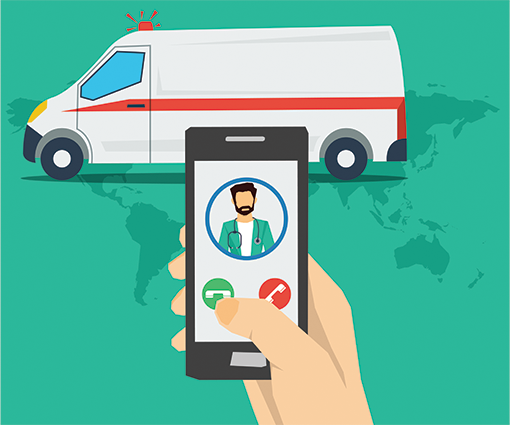As CMS Moves Forward With ET3 Model, Will Telehealth Get Its Chance?
CMS has announced its final round of participants in the Emergency Triage, Treat and Transport (ET3) model, an innovative Medicare program that could use telehealth and mHealth tools to improve care for 911 callers.

Source: ThinkStock
- Federal officials have selected another 184 emergency healthcare providers to take part in an innovative program that can use telehealth and mHealth to improve care coordination for people dialing 911.
The Centers for Medicare & Medicaid Services last week announced the final group of participants for its Emergency Triage, Treat and Transport (ET3) model, a payment model that gives ambulance companies and other EMS providers more leeway in choosing where the transport 911 patients. They join more than 200 participants announced in February 2020.
CMS is also issuing a Notice of Funding Opportunity (NOFO) of up to $34 million over two years to help healthcare providers design connected health platforms that can accommodate ET3 participants.
Unveiled in 2019 and launched at the beginning of this year, the ET3 model is designed to reduce the number of unnecessary 911 transports to hospitals and improve care coordination for Medicare beneficiaries who may see the hospital as their primary source of care. It could favor Mobile Integrated Health (MIH) programs, including Community Paramedicine, that use connected health to improve access to care.
CMS briefly paused the program last year at the coronavirus pandemic took hold, then expanded it to include more potential destinations for ambulance transports for the duration of the COVID-19 public health emergency.
The $34 million will be awarded to local and state governments or programs that have authority over 911 operations. As many as 40 two-year agreements, with awards not to exceed $1.175 million, will be administered.
The program allows EMS providers and healthcare providers to develop new methods for evaluating 911 calls. This may include using telehealth and mHealth tools and platforms to better diagnose patients at the scene, connect virtually with appropriate care providers and transport patients to more appropriate locations, such as primary care office, community health clinic, mental health or substance abuse care provider, stand-alone emergency care clinic or other service.
“This model will create a new set of incentives for emergency transport and care, ensuring patients get convenient, appropriate treatment in whatever setting makes sense for them,” then-Health and Human Services Secretary Alex Azar said when the program was announced in 2019. “Today’s announcement shows that we can radically rethink the incentives around care delivery even in one of the trickiest parts of our system. A value-based healthcare system will help deliver each patient the right care, at the right price, in the right setting, from the right provider.”
